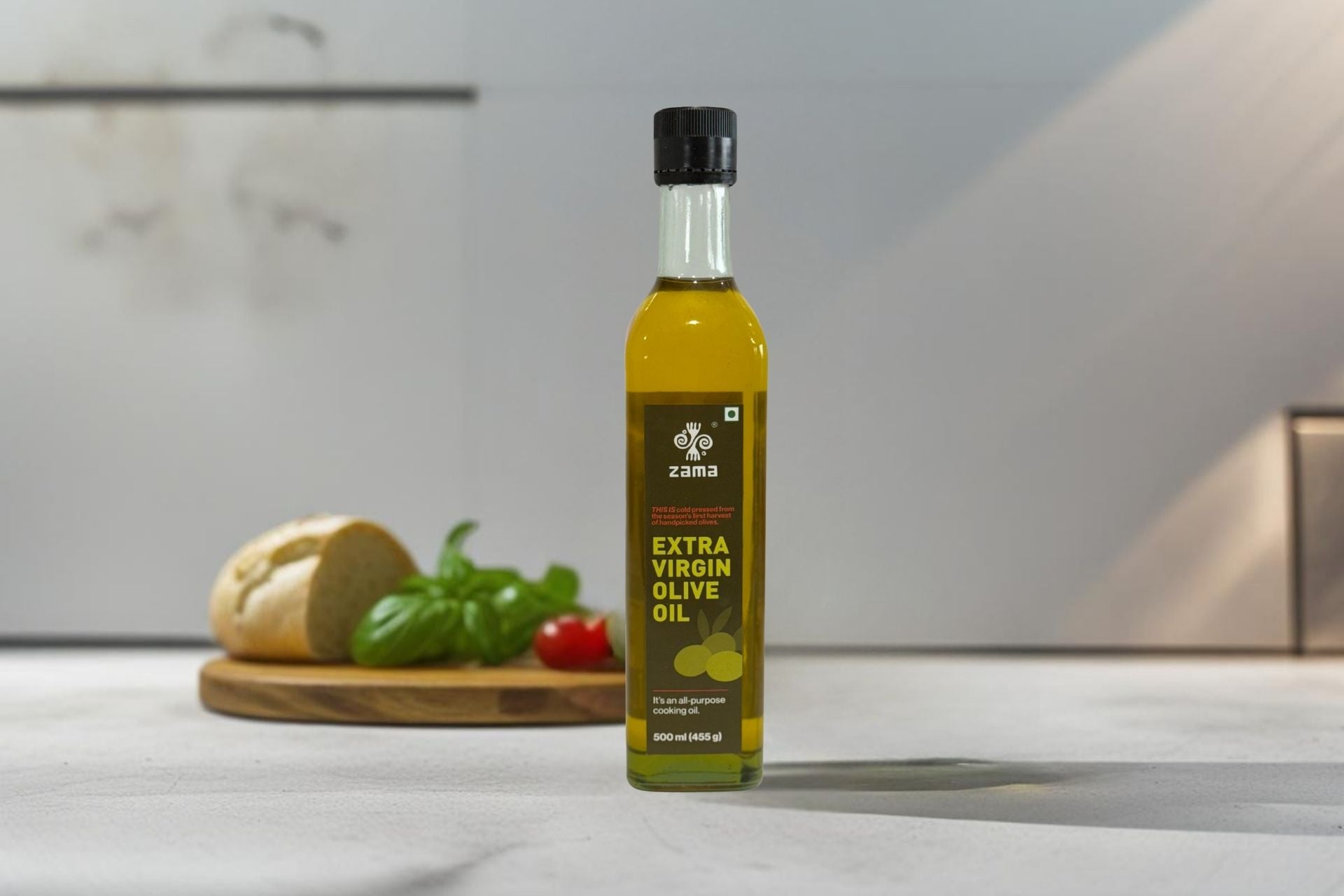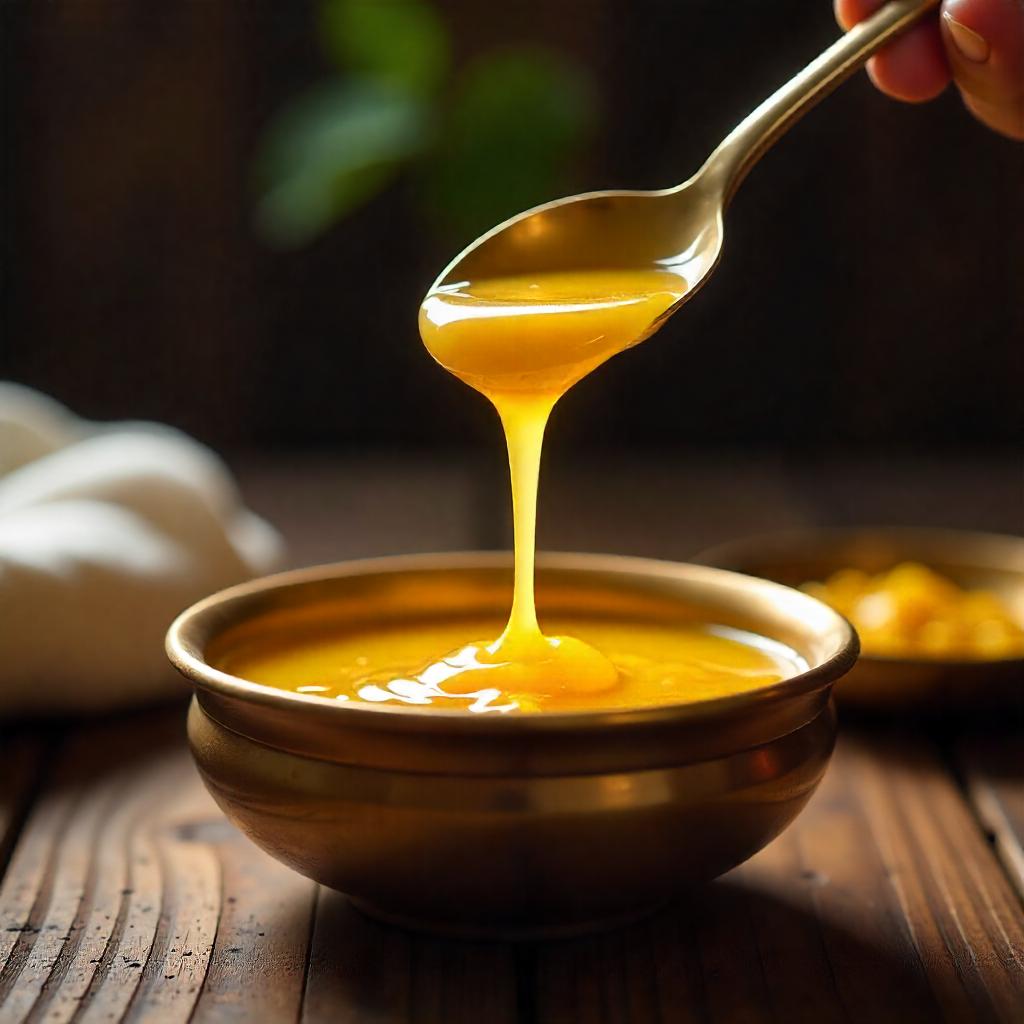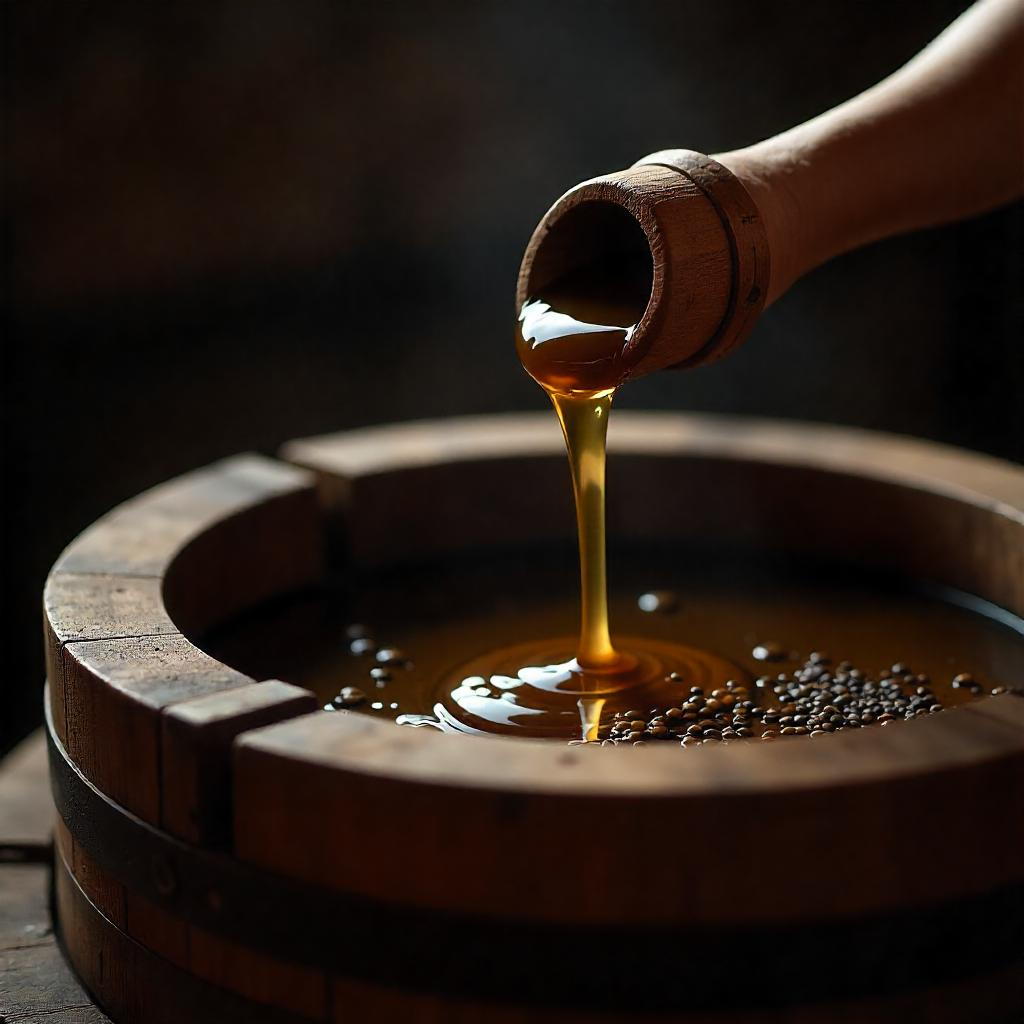Ghee is having a global moment—Ayurveda-approved, chef-endorsed, Instagram-verified. It’s in many kitchens, in wellness routines, and even in our coffee mugs.
But here’s what most people don’t realise: how your ghee is made changes everything.
Was it churned from curd or cream? Did it come from indigenous cows or from an anonymous milk pool? Was it simmered low and slow—or fast-cooked in a factory?
These questions matter—not just for tradition’s sake, but for your gut, your health, and your food.
We’re here to break it down—from the lost logic of the Bilona method to the difference between A1 and A2 milk, and how to spot ghee that’s genuinely worth your trust.
Cultured A2 Ghee ≠ Clarified Butter
Most commercial ghee is just clarified butter—cream boiled down into fat. But traditionally, real ghee in Ayurveda is made from curd, not cream, and from A2 milk of Desi Cows.
That one step—culturing the milk into curd—changes everything.
Culturing the milk into curd breaks down lactose and casein. It changes the structure of the fat. It introduces naturally occurring enzymes. When that curd is churned and slowly simmered into ghee, what you get is lighter on the gut, easier to absorb, and more bioavailable—which is why it’s still used in Ayurveda today to deliver herbs deep into tissues.
Ghee like this is considered satvik - it supports digestion, builds ojas (vitality), and keeps you grounded.
The other kind? It skips the fermentation, loses the flavour, and often ends up heavy, greasy, and hard to digest.

The Bilona Method: What It Actually Is
The word Bilona doesn’t imply premium—it implies patience.
It starts with A2 milk from indigenous Indian cows. The milk is boiled, cooled, and set into curd. That curd is left to ferment overnight.
In the early morning—during Brahma Muhurat, the pre-dawn window traditionally used for activities that require calm and focus—the curd is churned using a wooden bilona. This slow churning separates out the white butter (makkhan), which is then simmered on low heat until it turns into ghee.
Each step has a function:
-
Fermentation breaks down lactose and casein
-
Slow churning preserves enzymes
-
Low-heat simmering retains nutrients and flavour
-
Rich in butyric acid and fat-soluble vitamins
-
The byproduct is just buttermilk—
The result is ghee that’s naturally grainy, aromatic, and digestible—without the need for preservatives, added flavouring, or processing agents.

Why A2 Milk Matters
Traditionally, ghee is made from A2 milk sourced from indigenous Indian cows—breeds like Gir, Sahiwal, Tharparkar, and Hallikar.
Milk contains a protein called beta-casein. In desi cows, this protein is the A2 type. In most commercial dairy breeds—like Holstein or Jersey—it’s mostly the A1 type.
Here’s the difference:
When you digest A1 milk, it can release a compound called BCM-7, which many people find hard to break down. A2 milk doesn’t release this compound—making it easier on the gut, even for those who normally struggle with dairy. Nutritionally, A1 and A2 milk may look similar. But how your body responds to them is very different.
Indigenous cows are central to the Bilona method because:
-
Their milk supports better digestion
-
It curdles naturally into proper dahi
-
It simmers into ghee that feels light—not greasy or bloating
And just to clarify: A2 milk doesn’t contain more protein. It simply contains the kind of protein our body tends to tolerate better.
The shift to high-yield hybrid or foreign cows, and to cream-based processing, happened because it was cheaper, faster, and easier to scale.
But if you're serious about ghee that actually supports your body, it has to start with A2 milk + curd + Bilona churning. That’s how you get ghee that’s closer to food-as-medicine, not food-as-commodity.
The Industrial Shortcut: “Ghee” Today
Instead of starting with curd, most commercial ghee skips fermentation entirely. The process usually looks like this:
-
Cream is extracted directly from milk (no fermentation, no enzymatic complexity)
-
Churned rapidly using industrial machines
-
Boiled at high heat to speed up separation
-
Blended with refined oils or dalda in some cases, to cut costs (there are regular reports of adulterated ghee being seized across the country)
-
Packed in plastic, optimised for long shelf life
The outcome is a cheaper product designed for scale.
It may still be labelled “ghee,” but it’s missing everything that made ghee valuable in the first place.

Why It’s Not Just a Health Thing—It’s a Cultural One
In earlier generations, ghee wasn’t a packaged product. It was made at home—weekly, deliberately, and with purpose.
Cows were part of the household. Milk was set into curd overnight. Churning happened early in the morning, often during Brahma Muhurat. The leftover buttermilk was used in the kitchen. This process made sense for the body, the environment, and the way people lived.
As dairy became commercialized, the process changed. The shift to high-yield cows, cream extraction, and factory-scale ghee wasn’t an evolution. It was a shortcut. Faster, yes, but disconnected from how ghee was always meant to function.
In the 1980s and 90s, refined seed oils were introduced as the healthier choice. Ad campaigns told people ghee was heavy. Dangerous. Full of cholesterol. So ghee was pushed aside in favour of oils that were chemically extracted, deodorised, bleached, and standardised for mass consumption. These oils were newer, cheaper, and aggressively marketed as “cleaner” than ghee. But over time, we’ve seen the trade-offs—especially around gut health, inflammation, and long-term impact on the body.
Now, the conversation is shifting again.
People are recognising that the problem wasn’t ghee. It was how we misunderstood fat—
People are paying attention to gut health, good fats, and slow food. The old systems—curd, A2 milk, Bilona—make sense again, because they never stopped working. They were just sidelined in favour of speed and scale. So yes, this is about health. But it’s also about memory, context, and knowing when a food system was already doing the right thing—long before we needed to prove it.
How to Know What You’re Buying
If the ghee you’re buying says “Bilona” or “A2” on the label, here’s what you should actually look for:
-
Curd-based preparation — If it starts with cream, it’s not Bilona.
-
Milk from indigenous Indian cows — Not just “A2-certified,” but breeds like Gir or Sahiwal.
-
Visible grainy texture — Smooth, plasticky ghee usually means high-heat or added stabilisers.
-
Aroma — Real ghee smells nutty and clean, not flat or synthetic.
-
Clarity on process — If the brand doesn’t explain how it’s made, that tells you enough.

FAQs
Is Bilona ghee suitable for people with lactose intolerance?
Yes. During the Bilona process, the milk is first fermented into curd. Most of the lactose and casein break down at this stage. Whatever remains is further reduced during the slow simmering of the butter. Many people with lactose sensitivity find Bilona ghee far easier to digest than milk or cream-based ghee.
Is it completely lactose-free?
Almost. While trace amounts may remain, they are minimal enough that most lactose-intolerant individuals can digest it comfortably. If you're highly sensitive, start with a small amount and observe how your body responds.
Does A2 ghee have more protein than regular ghee?
No. Ghee, by nature, is almost pure fat. The difference lies in the milk used to make it. A2 milk (from indigenous Indian cows) contains only A2 beta-casein, which is easier on the digestive system compared to the A1 protein found in most hybrid or foreign cows.
What makes Bilona ghee easier on the stomach?
Three things:
-
The use of A2 milk, which contains a more gut-friendly form of protein
-
The curd fermentation, which breaks down hard-to-digest components
-
The slow cooking, which retains natural enzymes and eliminates residues
This combination results in a ghee that supports digestion rather than taxing it.
What does a grainy texture in ghee mean—and is it good?
Yes, it’s a sign of quality. Graininess means the ghee was simmered slowly and cooled naturally—without industrial emulsifiers or processing. Traditionally, this texture was considered ideal and a mark of proper home preparation.
What container is best for storing ghee?
Traditionally, ghee was stored in ceramic jars (bharani), brass containers, or stainless steel canisters—always kept away from moisture. Today, glass jars are the most neutral and stable option. Avoid plastic, as it can leach into the ghee over time, especially in heat.
How should I store Bilona ghee at home?
-
Store it in a cool, dry place, away from sunlight
-
No refrigeration is needed
-
Always use a dry spoon to avoid introducing moisture
-
Keep the jar tightly closed to prevent exposure to air and odours
Can I cook with Bilona ghee at high heat?
Yes. Bilona ghee has a high smoke point of around 250°C, which makes it ideal for frying, roasting, sautéing, and even baking. It doesn’t break down as easily as refined oils, and adds depth without overwhelming the dish.
Does it need to be refrigerated once opened?
No. Properly made ghee is shelf-stable for months—even a year—if stored correctly. Refrigeration can cause condensation inside the jar, which may lead to spoilage.
Can children and elderly people have Bilona ghee?
Yes. It's often recommended for both—thanks to its digestibility and fat-soluble nutrients like Vitamin A, D, E, and K. In traditional households, a spoon of ghee in hot rice or warm milk was part of daily meals for growing children and older family members alike.
What’s the difference between ghee and butter?
Butter contains water, milk solids, and fat. Ghee is the result of removing the water and solids, leaving just the fat—making it more stable and suitable for cooking. Bilona ghee, in particular, goes a step further: it’s made from cultured curd, not cream, resulting in a product that’s more digestible and better suited to cooking.
How do I know if my ghee is real Bilona ghee?
Check for:
-
The use of curd, not cream
-
A clear mention of A2 cow milk and its breed
-
Grainy texture and nutty aroma
-
No added flavouring, stabilisers, or oils
-
Transparent information about the process
Sometimes I see a thin layer of liquid or slight separation in my ghee. Is that normal?
Yes, it’s completely normal—especially in small-batch, curd-based A2 ghee that hasn’t been industrially stabilised.
This can happen when:
-
The ghee is stored in a warmer environment
-
Moisture enters the jar (e.g., through a wet spoon)
-
The ghee is freshly made and still “settling”
You may notice a thin, translucent layer on top or a slight settling of solids at the bottom. As long as the aroma is clean and nutty—not sour or musty—your ghee is absolutely fine to use.
Just stir gently if needed, or let it sit undisturbed in a cool, dry place.
These natural changes are a sign that the ghee hasn’t been chemically homogenised.
What about slight changes in colour over time?
Colour can vary slightly between batches depending on:
-
The season the milk was collected
-
What the cows were eating (monsoon grass, winter feed, etc.)
-
How long the butter was simmered
Proper Bilona ghee made from A2 milk can range from pale yellow to deep golden, and that variation is normal. What matters most is the texture, aroma, and clarity—not the exact shade.




